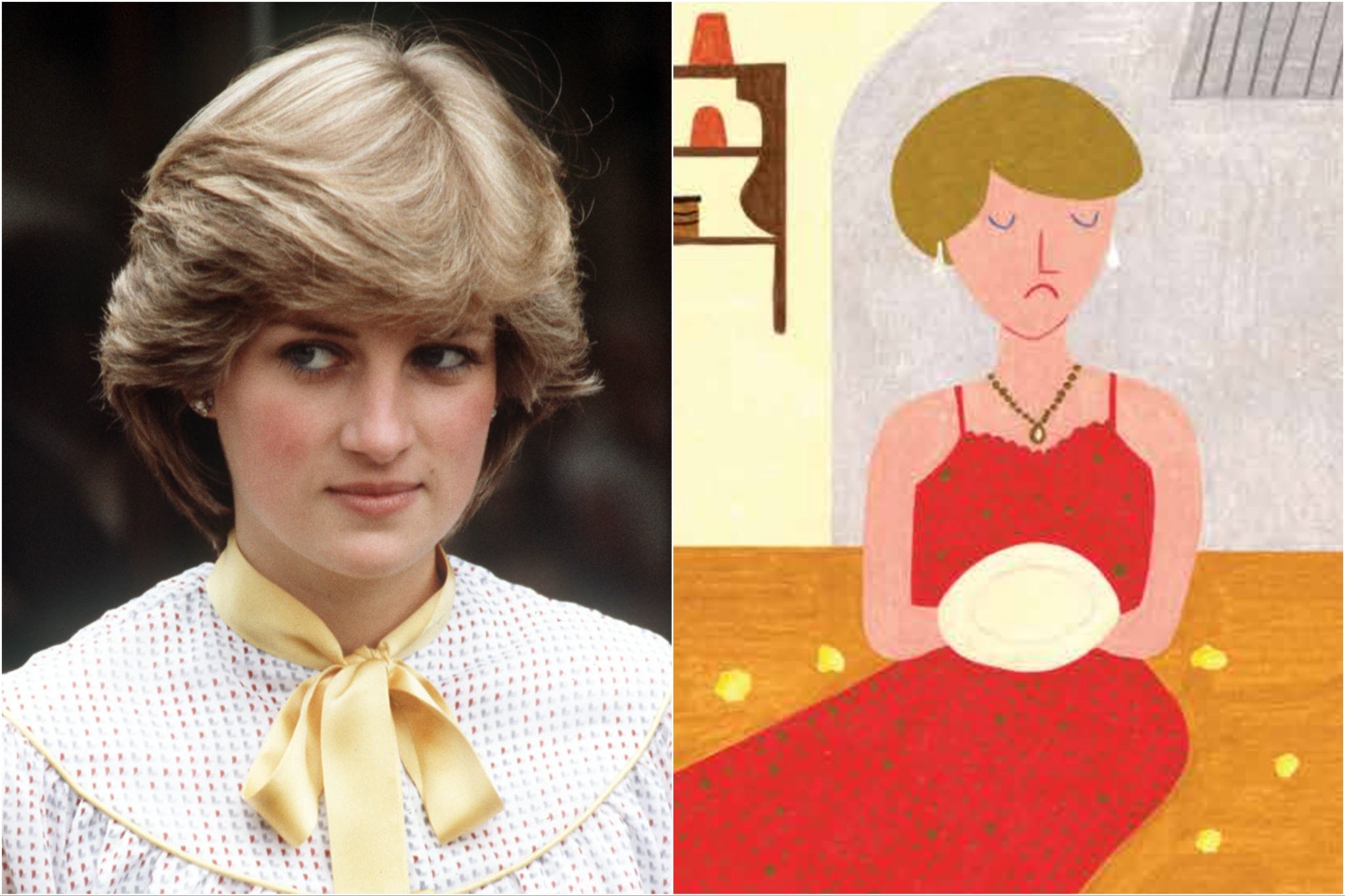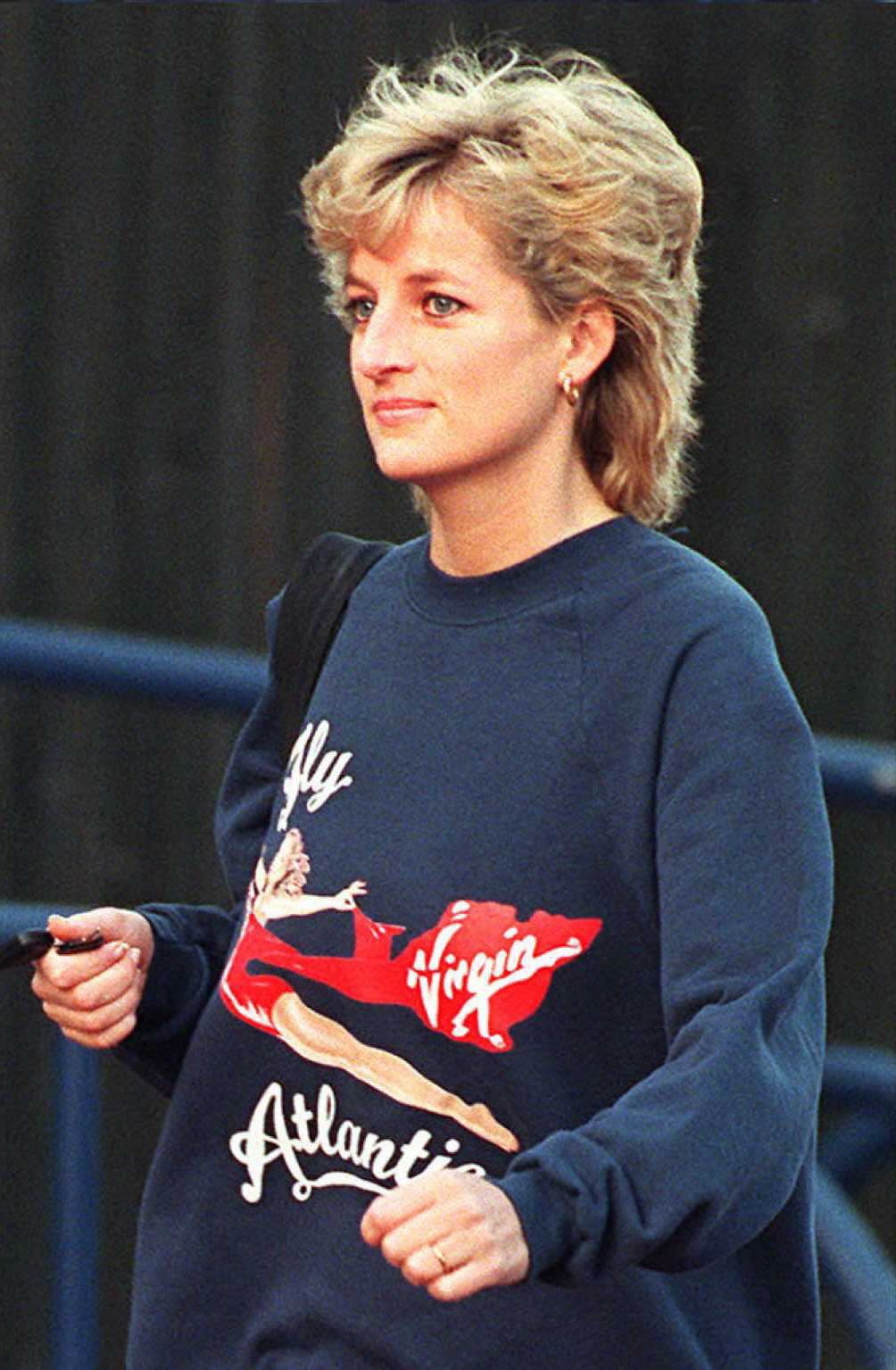Princess Diana’s bulimia is being depicted in a children’s book – and it could save young lives
A Diana edition of the popular ‘Little People, Big Dreams’ series is doing something revolutionary by acknowledging the late royal’s eating disorder, writes Olivia Petter, who remembers a time when low food intake was a source of pride among her peers at school


Your support helps us to tell the story
From reproductive rights to climate change to Big Tech, The Independent is on the ground when the story is developing. Whether it's investigating the financials of Elon Musk's pro-Trump PAC or producing our latest documentary, 'The A Word', which shines a light on the American women fighting for reproductive rights, we know how important it is to parse out the facts from the messaging.
At such a critical moment in US history, we need reporters on the ground. Your donation allows us to keep sending journalists to speak to both sides of the story.
The Independent is trusted by Americans across the entire political spectrum. And unlike many other quality news outlets, we choose not to lock Americans out of our reporting and analysis with paywalls. We believe quality journalism should be available to everyone, paid for by those who can afford it.
Your support makes all the difference.When I think about mealtimes at school, a part of me still recoils. Talking about how little you’d eaten was a badge of honour. Rushing downstairs to the bathroom after meals? A bonding experience. Girls walking into the dining hall with barely anything on their trays? A sign of social supremacy. It was awful – and yet it all seemed so normal.
According to the charity Beat, roughly 1.25 million people in the UK have an eating disorder. The majority are female and many develop them during adolescence. This was certainly the case among my peers at school, with disordered eating habits starting at around age 14. It didn’t help that we were weighed on a fortnightly basis – a measure that had originally been introduced to monitor eating disorders but only ended up perpetuating them.
With the highest mortality rate of any psychiatric disorder, anorexia can be a devastating illness, as can bulimia, which is associated with countless other medical complications, such as heart, bowel and bone problems. So with all this in mind, it was encouraging to hear about the latest instalment in the Little People, Big Dreams series of children’s books – a forthcoming edition about Princess Diana will address her struggle with bulimia. The book, which will be released on 7 September, claims to “introduce young readers to the world’s most-loved princess” and will primarily revolve around telling the story of Diana’s life. But it also won’t shy away from her eating disorder.
According to The Telegraph, the book features a brief description of her disordered eating habits, along with an illustration of Diana sadly cradling an empty plate. “Whenever she felt alone, she sought relief by eating all the cakes she could find in the royal kitchens,” a caption under the illustration reads. “But that sweet feeling of comfort didn’t last long,” it continues. “Once it was gone, she would try to get rid of all the food she had eaten by making herself sick.”
The book also addresses the discrepancy between Diana’s private and public life, stating: “Even though her life seemed to be taken from the pages of a fairy tale, she soon realised that the prince’s heart belonged to someone else. Over time that sadness grew into an eating disorder called bulimia.”
It goes on to praise the late princess for seeking help and speaking out about her illness: “It took her time to seek help, learn to love herself and stop hurting her body. But once she did, she felt better than ever.” It notes that Diana “was one of the first famous people to speak up about her struggle with bulimia, helping others to confront it, too”.
Speculation around Diana’s eating disorder was rife in the 1980s but it wasn’t until her infamous 1995 Panorama interview with Martin Bashir that she addressed it herself. “I had bulimia for a number of years. And that’s like a secret disease,” she said. “You inflict it upon yourself because your self-esteem is at a low ebb, and you don’t think you’re worthy or valuable. You fill your stomach up four or five times a day – some do it more – and it gives you a feeling of comfort.”
Early intervention is key to preventing eating disorder rates from rising. Research shows that we should try and reach someone with an eating disorder within the first three years of illness due to changes that occur in the brain, body and behaviours
The fact that all this will be addressed in a children’s book is nothing short of revolutionary. The Little People, Big Dreams series by Maria Isabel Sánchez Vegara is wildly popular around the world, with more than 7.5 million copies sold globally. Other notable figures that have been featured include Elton John, Iris Apfel and Aretha Franklin.
“Princess Diana’s honesty about her experiences with bulimia helped many people to recognise their own symptoms and reach out for help,” says Tom Quinn, Beat’s director of external affairs. “It’s great to see that her legacy is still having an impact, and at the same time it’s important that children are signposted to quality support, as hearing about eating disorders can be upsetting.”
The book is timely given the rising number of eating disorders in children. In figures published last week, the NHS found a large and recent increase in the number of hospital admissions for young people due to eating disorders. Of the 24,300 hospital admissions (up from 13,200 in 2015-16) for those with eating disorders in 2020-21, almost half were under the age of 25 (11,700). GP records have also shown a sharp rise in the number of teenage girls developing eating disorders during the pandemic.
Meanwhile, in England, the number of children and young people starting treatment for an eating disorder increased from 5,243 in 2016-17 to 11,809 in 2022-23. As a result, the London Assembly Health Committee is carrying out an investigation into eating disorders in London, having held its first meeting on the subject in June to discuss the role of early intervention services, and what can be done to reduce these figures.
“We heard that while it is unlikely that social media would be the main cause of an eating disorder, it can play a significant role in worsening eating disorders and pushing people who are on the edge of an eating disorder into one,” says Dr Onkar Sahota, Chair of the London Assembly Health Committee. “Author and campaigner Hope Virgo told us that young people are turning to social media for diet and fitness advice, which can be unscientific and, in some cases, dangerous. Through her work in schools in London, she has found that many young people who are viewing this content can be triggered into feeling really body conscious and under pressure to look a certain way.”
A lot has changed since I was a teenager. Sure, we’d all heard about eating disorders. But none of us recognised those habits in our own behaviours; neither, it seemed, did any of our teachers. I have no doubt that being told about Diana’s bulimia from a young age would have changed that – because it’s only by seeing how these illnesses affect other people that we learn about how they can affect us, too.

Nonetheless, I worry about whether or not this is really being prioritised enough in schools. One book and a London-based investigation is a great start, but it’s just the beginning. Social media was not around when I was a teenager, and there have been numerous reports of Instagram and TikTok contributing to dangerous messaging about eating habits, as well as perpetuating so-called “thinspo” rhetoric. The links are obvious – and it’s not hard to see how vulnerable teenagers get sucked in.
Knowing how bad things were when I was at school, I can only imagine how much worse they would have been had we been spending hours on Instagram looking at photos of other women’s bodies, and pinching at the parts of ourselves that didn’t match up.
“Early intervention is key to preventing eating disorder rates from rising,” says consultant psychologist Dr Omara Naseem. “Research shows that we should try and reach someone with an eating disorder within the first three years of illness due to changes that occur in the brain, body and behaviours. In the early stages, these changes are more easy to reverse.”
As for how learning about Diana’s experiences could help children, Dr Naseem says it could make a huge difference. “It will help to normalise conversations around these problems.” Opening up a dialogue around eating disorders might sound simple enough, but it is integral given the societal taboo attached to them. “Shame is a powerful force that helps an eating disorder thrive,” she continues. “Young people may feel comforted knowing they aren’t the only ones going through such a difficult issue. [And] If it can affect someone as high profile as Diana, it really is indiscriminate.”
I wish I’d read a book like this when I was a child. Thinking back to what happened in my school dining hall – and the long-term effects they’ve had on all of us – I wish everyone had.
If you’re worried about your own or someone else’s health, you can contact Beat, the UK’s eating disorder charity, 365 days a year on 0808 801 0677 or beateatingdisorders.org.uk



Join our commenting forum
Join thought-provoking conversations, follow other Independent readers and see their replies
Comments